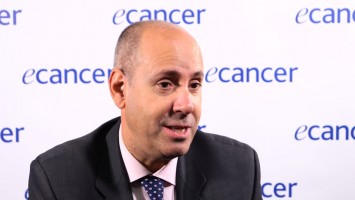At the last San Antonio I presented the results of the randomised phase II SERENA-2 trial. SERENA-2 is a trial that tests different doses of a novel next generation selective ER degrader, camizestrant, versus the current standard of care, fulvestrant. SERENA-2 included 240 patients with ER positive, HER2 negative advanced breast cancer that had received and progressed to prior endocrine therapy and randomised them to receive camizestrant 75mg, camizestrant 150mg, or fulvestrant. These patients could have received up to one prior line of endocrine therapy in the metastatic setting and also up to one prior line of chemotherapy in the same setting. Important stratification factors were the presence of liver or lung metastasis and prior treatment with CDK4/6 inhibitors.
The primary endpoint of SERENA-2 was progression free survival as assessed by the investigator. SERENA-2 met its primary endpoint as both doses of camizestrant, 75mg and 150mg, were superior to fulvestrant in terms of PFS. The hazard ratio for the comparison of camizestrant 75mg with fulvestrant was 0.58 with a median PFS in camizestrant 75mg arm of 7.2 months compared to 3.7 months with fulvestrant. In the comparison of camizestrant 150mg with fulvestrant the hazard ratio was 0.67 with a median PFS for camizestrant 150mg of 7.7 months compared to fulvestrant 3.7 months.
Importantly, in the clinically relevant subgroups of unmet clinical need camizestrant at both doses was also superior to fulvestrant. These groups were patients with prior CDK4/6 inhibitors, patients with lung or liver metastases, patients with an identified ESR1 mutation at baseline plasma sample, and also patients with evidence of ER-driven disease.
The tolerability of camizestrant was generally very good as dose interruptions, reductions or discontinuations due to adverse events were very infrequent. Very infrequent were also grade 3 or higher adverse events in both doses of camizestrant. The most frequent adverse events with this drug were photopsia, bradycardia, asthenia, and arthralgia. The great majority of the adverse events were grade 1 and did not impact patients’ daily activities.
So, in summary, treatment with de novo next generation selective ER degrader camizestrant at both 75mg and 150mg is superior in terms of PFS compared to fulvestrant in patients with ER positive, HER2 negative metastatic breast cancer that had received prior endocrine therapy.
What is the future for this study and how do you think these results will impact the future treatment of breast cancer?
Camizestrant is now being tested in two pivotal phase III clinical trials, SERENA-4 and SERENA-6, both in combination with CDK4/6 inhibitors in the first line treatment of ER positive, HER2 negative metastatic breast cancer. The results of SERENA-2, showing the superiority of camizestrant over fulvestrant, set the basis to test camizestrant as the new backbone of endocrine therapy for future trials for these patients.








